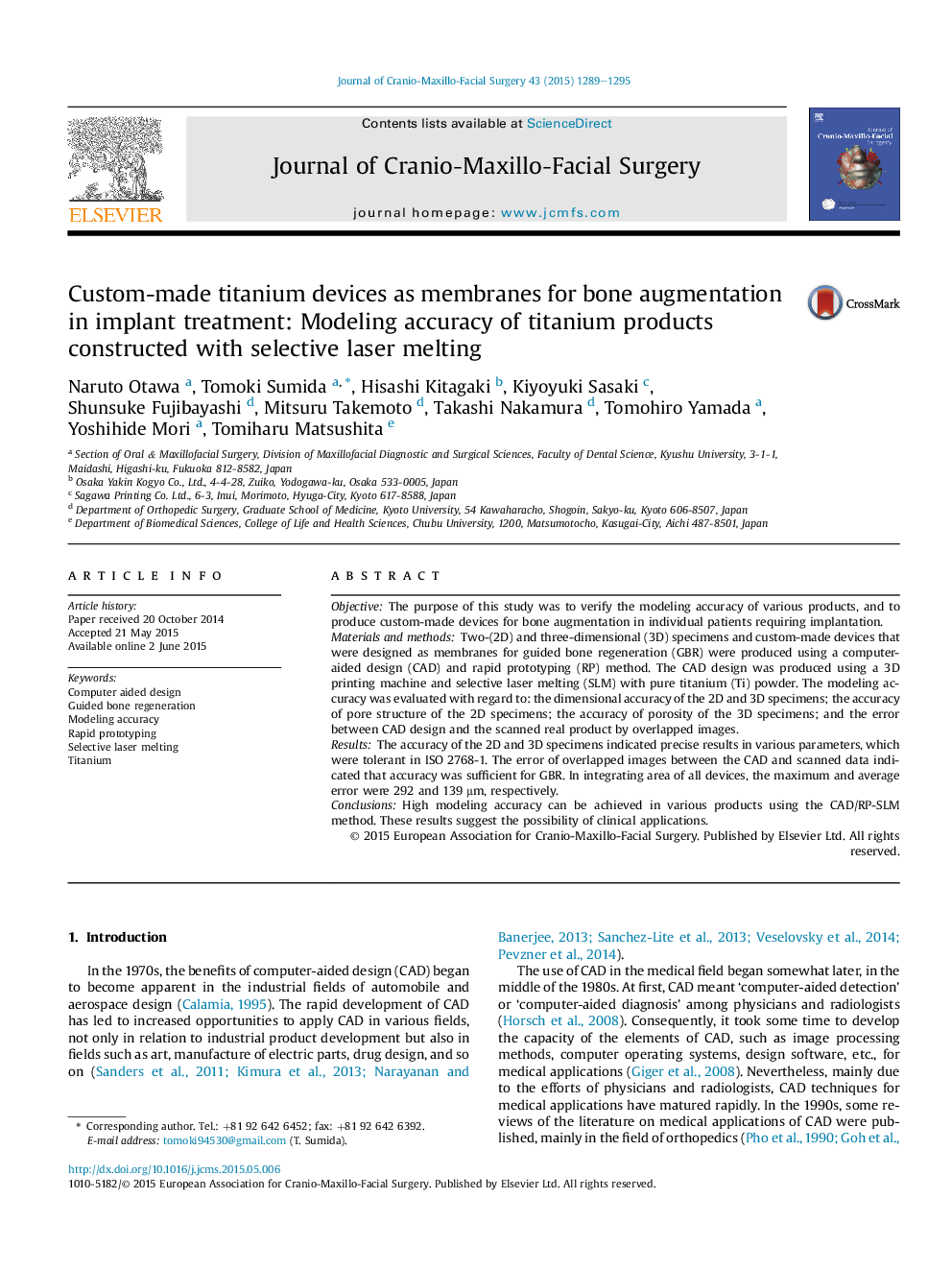| Article ID | Journal | Published Year | Pages | File Type |
|---|---|---|---|---|
| 3142376 | Journal of Cranio-Maxillofacial Surgery | 2015 | 7 Pages |
ObjectiveThe purpose of this study was to verify the modeling accuracy of various products, and to produce custom-made devices for bone augmentation in individual patients requiring implantation.Materials and methodsTwo-(2D) and three-dimensional (3D) specimens and custom-made devices that were designed as membranes for guided bone regeneration (GBR) were produced using a computer-aided design (CAD) and rapid prototyping (RP) method. The CAD design was produced using a 3D printing machine and selective laser melting (SLM) with pure titanium (Ti) powder. The modeling accuracy was evaluated with regard to: the dimensional accuracy of the 2D and 3D specimens; the accuracy of pore structure of the 2D specimens; the accuracy of porosity of the 3D specimens; and the error between CAD design and the scanned real product by overlapped images.ResultsThe accuracy of the 2D and 3D specimens indicated precise results in various parameters, which were tolerant in ISO 2768-1. The error of overlapped images between the CAD and scanned data indicated that accuracy was sufficient for GBR. In integrating area of all devices, the maximum and average error were 292 and 139 μm, respectively.ConclusionsHigh modeling accuracy can be achieved in various products using the CAD/RP-SLM method. These results suggest the possibility of clinical applications.
